We arrived off the night bus from Maracaibo at around 6.30am. Throughout the night the air-conditioning was on so low we had to put every piece of clothing we had in our day sacks on just to compensate, fortunately there was no-one trying to sell anything on the bus. The last bus we took to Maracaibo had a guy who stood up for 40 minutes, like a market trader, selling toothbrushes and toothpaste. No joke.
Merida is a university city and is also the adventure capital of South America
. It is surrounded by mountains, including the country's highest summit Pico Bolivar and has a lovely temperate climate. It is the dry season and is around 24 degrees but snow still graces the top of a few of the peaks that surround the town. The hillsides are cloaked in dark green forest. It is a very picturesque place and we look out on it all from our room's balcony at our hostel. The city itself has very few high rise and reminds me of some of the cities in Bolivia, there aren't many Western chains and most shops seem independent. There aren't too many points of interest in the city though either, the main square, like most in this part of the world is called Plaza Bolivar, where the small cathedral stands and there are some smaller squares and churches dotted around but most people are here for the extreme sports available. Canyoning, paragliding, mountaineering, mountain biking and also safari trips to the low-lying savannah plains of Los Llanos are all available. We thought about doing Los Llanos but as we did the Pantanal in Brazil, which is similar, so we decided against it, but most people we spoke to that have done it thougt it was incredible - they even saw Anacondas, which might be a reason in itself to go, or not
.
One of the great things about Merida is that it has an ice-cream shop, Heladeria Coromoto, that holds the world record for number of flavours, nearly 1,000. These include all your standard fare but also beef, hot dog, potato and cheese. A friend had chicken and rice flavour, he said it was gross. Julie and I had three scoops each, it is a cool place though I was disappointed to find that the Sambuca flavour had run out.
If you come to Merida to ride the Teleferico (the cable car) like we did then you are going to be disappointed. It has been shut since August 2008 due to some safety problems and there as yet is no date to reopen. Despite our research before arriving we hadn't seen anything about it being closed, or from the locals we spoke to in Maracaibo, so we spent our first day in the town getting orientated. The next day we took an extreme mountain biking experience, which started about 35km from town in a village called Jaji. From there we climbed off road to the top of the beautiful mountain range nearby
. Supported by a 4x4, the driver and a guide, Julie and I were the only particpants and we shortly realised why. It was hell.
The trip in total was about 42km, with the first 27km all uphill. Portions were so steep that if you stopped it was difficult to start again. Parts of the track were in the shades of woodland and were quite muddy, it was a dirty business getting through them. Julie sought refuge in the truck for several parts, stowing the bike in the rear. I fought on, I swear I nearly threw up. As we climbed further the cloud cover would creep in and cool the 24 degree air, it was bliss. Fortunately the last 15km is by road and all downhill, sweeping swiftly down the mountain twisting and turning around hairpin bends that the Italian coast would have been proud of. The views were spectacular. We came down so fast that you could feel the temperature increase as we dropped over 2,000 metres through the scattered clouds into bright sunshine. We arrived in the settlement of San Juan, which has the only salt lagoon in the country
. It is an emerald green and we eat a very late lunch by its shore and downed a few beers with our guides.
From here we have been desparately trying to arrange a trip to Angel Falls, which was difficult to do outside of Venezuela. We thought we had it all organised but at the last minute it fell through due to a rubbish tour operator we liaised with, so we had to scramble around and talk to other tour companies. Eventually we have it all reorganised, it is expensive to do Angel Falls any way you do it. We have decided to travel from Caracas, where we go tonight on another night bus, and fly down in a couple of days though it is far cheaper to get to Ciudad Bolivar by bus (either from Merida or Caracas) and then join the tours from there into the Canaima National Park where Angel Falls stands. As we are pushed for time and it's Julie's birthday we have decided to pay a bit more and fly down, it also means we don't have to suffer a night bus back to Caracas the day before we fly down to Argentina
.
In addition to the problems organising Angel Falls we have had other issues to contend with too, particularly around money. Venezuela has a black market for changing cash. The rate you get on the black market is around 75%+ higher than what you would get with the national exchange rate, i.e. from a bank/cash machine (official rate for 1US to 2.5BF whereas on the black market it is 1US to 4.5 / 5, and 1UK pound is officially 3.12 and on the black market it is 5.5 / 7 depending on where you change). This is a problem as things cost comparably with Western European prices 'officially', but if you are paying having changed on the black market everything becomes very cheap. So as we didn't have much US dollars on us we originally thought that there would be no chance of us being able to raise any money to make things cheaper. However, our hopes were raised of a way round following a conversation with some Germans in our hostel.
Some of the posadas in town have European bank accounts, you transfer what you want to change into them from your own account and they will give you the black market rate
. I can't name the posadas as I think it isn't all above board but if you ask around people will point you in the right direction. Unfortunately it takes three working days to clear and they don't give you the cash until it appears in their account, as we are not here for that long in Merida we couldn't do it so are left paying the official costs for everything. Worse still we have had an absolute nightmare trying to use cash machines in Venezuela. Half don't work and a lot of the others don't seem to like to take forieign cards. After nearly 2 hours of walking around we eventually found one that worked, Banco Mercantil. Thank god as we had no way of raising any money unless we paid for everything by credit card, which would have been really bad as they add on between 8% and 14% for every transaction. The other problem would have been that many places, including the bus companies only take cash. Anyway, we have had to swallow it and move on. The cash machines also ask for the first or last 2 digits of your personal identification code, it took us a while to work out that this meant passport number for foreigners and citizen number for those from Venezuela. No-one knows why and how on earth the banks know your passport number is also a mystery. 1984.
So far our impression of Venezuela has been that of a very civilised country with really friendly people, many of which speak a little English. You stand in queues in shops and people will strike up conversations with you while you wait, it is really nice. Many will start up about their political situation and it seems to be a real love hate thing with Chavez.
Merida - South America's adventure capital
Wednesday, January 07, 2009
 Merida, Venezuela
Merida, Venezuela
Other Entries
-
12Bolivia - Quijarro, the Death Train and Santa Cruz
Nov 2048 days prior Santa Cruz, Boliviaphoto_camera2videocam 0comment 2
Santa Cruz, Boliviaphoto_camera2videocam 0comment 2 -
13Sucre - The White City
Nov 2147 days prior Sucre, Boliviaphoto_camera3videocam 0comment 1
Sucre, Boliviaphoto_camera3videocam 0comment 1 -
14The road to Potosi
Nov 2246 days prior Potosi, Boliviaphoto_camera9videocam 0comment 3
Potosi, Boliviaphoto_camera9videocam 0comment 3 -
15Uynui and the salt plains
Nov 2444 days prior Uyuni, Boliviaphoto_camera20videocam 0comment 0
Uyuni, Boliviaphoto_camera20videocam 0comment 0 -
16La Paz and the "Death Road"
Nov 2840 days prior La Paz, Boliviaphoto_camera5videocam 0comment 3
La Paz, Boliviaphoto_camera5videocam 0comment 3 -
17Puno and Lake Titicaca
Nov 3038 days prior Puno, Peruphoto_camera10videocam 0comment 1
Puno, Peruphoto_camera10videocam 0comment 1 -
18No change for notes....ever!
Dec 0335 days prior Cusco, Peruphoto_camera0videocam 0comment 0
Cusco, Peruphoto_camera0videocam 0comment 0 -
19The Inca Capital - Cusco
Dec 0434 days prior Cusco, Peruphoto_camera10videocam 0comment 1
Cusco, Peruphoto_camera10videocam 0comment 1 -
20Machu Picchu
Dec 1028 days prior Aguas Calientes, Peruphoto_camera12videocam 0comment 0
Aguas Calientes, Peruphoto_camera12videocam 0comment 0 -
21Arequipa and the Colca Canyon
Dec 1424 days prior Arequipa, Peruphoto_camera9videocam 0comment 0
Arequipa, Peruphoto_camera9videocam 0comment 0 -
22Nazca
Dec 1523 days prior Nasca, Peruphoto_camera6videocam 0comment 0
Nasca, Peruphoto_camera6videocam 0comment 0 -
23Pisco Sour
Dec 1721 days prior Pisco, Peruphoto_camera6videocam 0comment 0
Pisco, Peruphoto_camera6videocam 0comment 0 -
24Lima, 'City of the Kings'
Dec 2117 days prior Lima, Peruphoto_camera10videocam 0comment 1
Lima, Peruphoto_camera10videocam 0comment 1 -
25Colombia Landing - Bogota
Dec 2414 days prior Bogota, Colombiaphoto_camera5videocam 0comment 0
Bogota, Colombiaphoto_camera5videocam 0comment 0 -
26Cartagena - fairytale city of romance and legend
Jan 016 days prior Cartagena, Colombiaphoto_camera20videocam 0comment 0
Cartagena, Colombiaphoto_camera20videocam 0comment 0 -
27Santa Marta and Taganga
Jan 034 days prior Santa Marta, Colombiaphoto_camera0videocam 0comment 0
Santa Marta, Colombiaphoto_camera0videocam 0comment 0 -
28Stuck in Maracaibo
Jan 043 days prior Maracaibo, Venezuelaphoto_camera0videocam 0comment 0
Maracaibo, Venezuelaphoto_camera0videocam 0comment 0 -
29Merida - South America's adventure capital
Jan 07 Merida, Venezuelaphoto_camera7videocam 0comment 0
Merida, Venezuelaphoto_camera7videocam 0comment 0 -
30Caracas
Jan 092 days later Caracas, Venezuelaphoto_camera5videocam 0comment 4
Caracas, Venezuelaphoto_camera5videocam 0comment 4 -
31Into the wild - Canaima and Angel Falls
Jan 125 days later Canaima National Park, Venezuelaphoto_camera13videocam 0comment 0
Canaima National Park, Venezuelaphoto_camera13videocam 0comment 0 -
32Buenos Aires - Tango Central
Jan 158 days later Buenos Aires, Argentinaphoto_camera0videocam 0comment 0
Buenos Aires, Argentinaphoto_camera0videocam 0comment 0 -
33Mendoza - In the wine country
Jan 1912 days later Mendoza, Argentinaphoto_camera0videocam 0comment 2
Mendoza, Argentinaphoto_camera0videocam 0comment 2 -
34Vaparaiso - home of Bohemia
Jan 2215 days later Valparaiso, Chilephoto_camera0videocam 0comment 0
Valparaiso, Chilephoto_camera0videocam 0comment 0 -
35Santiago - saying goodbye to South America
Jan 2417 days later Santiago, Chilephoto_camera0videocam 0comment 0
Santiago, Chilephoto_camera0videocam 0comment 0 -
36Notes on South America
Jan 2417 days later Santiago, Chilephoto_camera0videocam 0comment 1
Santiago, Chilephoto_camera0videocam 0comment 1 -
37Soaking up the sun and rain in Sydney
Jan 2922 days later Sydney, Australiaphoto_camera0videocam 0comment 0
Sydney, Australiaphoto_camera0videocam 0comment 0 -
38Tasmania Times
Feb 0630 days later Hobart, Australiaphoto_camera0videocam 0comment 0
Hobart, Australiaphoto_camera0videocam 0comment 0 -
39Melbourne Madness and Sadness
Feb 1135 days later Melbourne, Australiaphoto_camera0videocam 0comment 0
Melbourne, Australiaphoto_camera0videocam 0comment 0 -
40Great Ocean Road, Grampians and Adelaide
Feb 1640 days later Adelaide, Australiaphoto_camera0videocam 0comment 1
Adelaide, Australiaphoto_camera0videocam 0comment 1 -
41The monster 4,000km road trip to Perth
Feb 2448 days later Nullarbor, Australiaphoto_camera0videocam 0comment 0
Nullarbor, Australiaphoto_camera0videocam 0comment 0 -
42Perth
Mar 0254 days later Perth, Australiaphoto_camera0videocam 0comment 1
Perth, Australiaphoto_camera0videocam 0comment 1 -
43Hanging in Hong Kong
Mar 1062 days later Hong Kong, Chinaphoto_camera14videocam 0comment 0
Hong Kong, Chinaphoto_camera14videocam 0comment 0 -
44Bangkok Crazy
Mar 1567 days later Bangkok, Thailandphoto_camera20videocam 0comment 0
Bangkok, Thailandphoto_camera20videocam 0comment 0 -
45Chiang Mai
Mar 1870 days later Chiang Mai, Thailandphoto_camera0videocam 0comment 0
Chiang Mai, Thailandphoto_camera0videocam 0comment 0 -
46Entering Laos - Luang Prabang
Mar 2173 days later Luang Prabang, Laosphoto_camera0videocam 0comment 0
Luang Prabang, Laosphoto_camera0videocam 0comment 0 -
47Vientiane - a very different side of Laos
Mar 2375 days later Vientiane, Laosphoto_camera0videocam 0comment 0
Vientiane, Laosphoto_camera0videocam 0comment 0

 Merida, Venezuela
Merida, Venezuela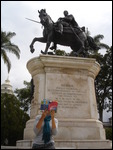
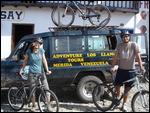
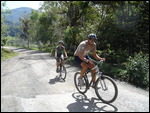
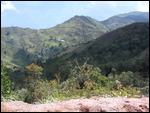












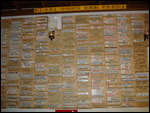
2025-05-22